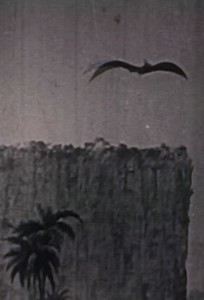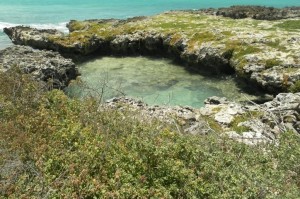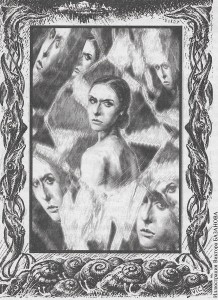 Rain forests, deserts, volcanic mountains, green-sand beaches. They’re all part of the alien landscape of a novel project that links and expands my novelettes “Daughters of Prime” and “The Others” (both of which originally appeared in F&SF). Since the alien setting will feature ever-more prominently in the book-length version, I figured it would be a good idea to experience such landscapes first hand.
Rain forests, deserts, volcanic mountains, green-sand beaches. They’re all part of the alien landscape of a novel project that links and expands my novelettes “Daughters of Prime” and “The Others” (both of which originally appeared in F&SF). Since the alien setting will feature ever-more prominently in the book-length version, I figured it would be a good idea to experience such landscapes first hand.
 Fortunately, I was able to find everything I needed in some remote corners of the Hawaiian islands. Who says research is boring?
Fortunately, I was able to find everything I needed in some remote corners of the Hawaiian islands. Who says research is boring?
Coincidentally, my trip coincided with the Canadian release of the print edition of Professor Challenger: New Worlds, Lost Places, a book that depicts the continuing adventures of George Edward Challenger — a character who is no stranger to wild and alien landscapes. My story in the book is “King of the Moon,” and during my travels I visited terrains that resembled places in that story. I’ll share those photos in a future post.
In addition to its well-known tourist destinations, Hawaii boasts a variety of uninhabited and underdeveloped locations. Among them are the micro-islands of Mokolua, Mokolea, Popoia and some 30 others that are now designated as Sea-Bird Sanctuaries. Landing on them requires a permit and a considerable amount of rowing, but the coast and effort are worth it.
 Popoia Island, also known as Flat Island for a shape reminiscent of the table-top plateau of Challenger’s Lost World (above right), is four acres of rock overgrown with a carpet of coastal plants. Its terrain is remarkably varied, with sandy beaches, overhanging cliffs (above left), and rocky pools (left). There’s precious little shade, for human’s at least. For avian inhabitants, the eroded rocks offer an abundance of bird-size caves for nesting.
Popoia Island, also known as Flat Island for a shape reminiscent of the table-top plateau of Challenger’s Lost World (above right), is four acres of rock overgrown with a carpet of coastal plants. Its terrain is remarkably varied, with sandy beaches, overhanging cliffs (above left), and rocky pools (left). There’s precious little shade, for human’s at least. For avian inhabitants, the eroded rocks offer an abundance of bird-size caves for nesting.
 In addition to birds, the rocks and surrounding waters are home to black periwinkle snails (pipipi) and cephalopods (he’e) — smaller versions of the mollusks that inhabit the alien planet of the Daughters of Prime stories. Indeed, an illustration from the Russian edition of “The Others” (“другие” in Russian) features these creatures in border designs framing the story’s central character. It was fun seeing these creatures depicted so accurately when the translation appeared, but it was even more rewarding to learn that smaller versions of them inhabit the miniature lost world of Flat Island.
In addition to birds, the rocks and surrounding waters are home to black periwinkle snails (pipipi) and cephalopods (he’e) — smaller versions of the mollusks that inhabit the alien planet of the Daughters of Prime stories. Indeed, an illustration from the Russian edition of “The Others” (“другие” in Russian) features these creatures in border designs framing the story’s central character. It was fun seeing these creatures depicted so accurately when the translation appeared, but it was even more rewarding to learn that smaller versions of them inhabit the miniature lost world of Flat Island.
I have more pictures and impressions to share. Indeed, I plan to spend the rest of the summer sorting the wealth of photographs and notes generated during the trip.
In my next post, we’ll descend into the crater of a volcano. Until then . . . scop on!
Image Credits:
The 21st-Century Scop on Popoia Island.*
The Amazon Plateau from Harry O. Hoyt’s film The Lost World, 1925.
Rock Pool on Popoia Island.*
Cara Gamma (from “The Others”), illustration from Elsi (Если) Magazine, Dec. 2009.
*Copyright © 2015, The 21st-Century Scop.


Leave a Reply